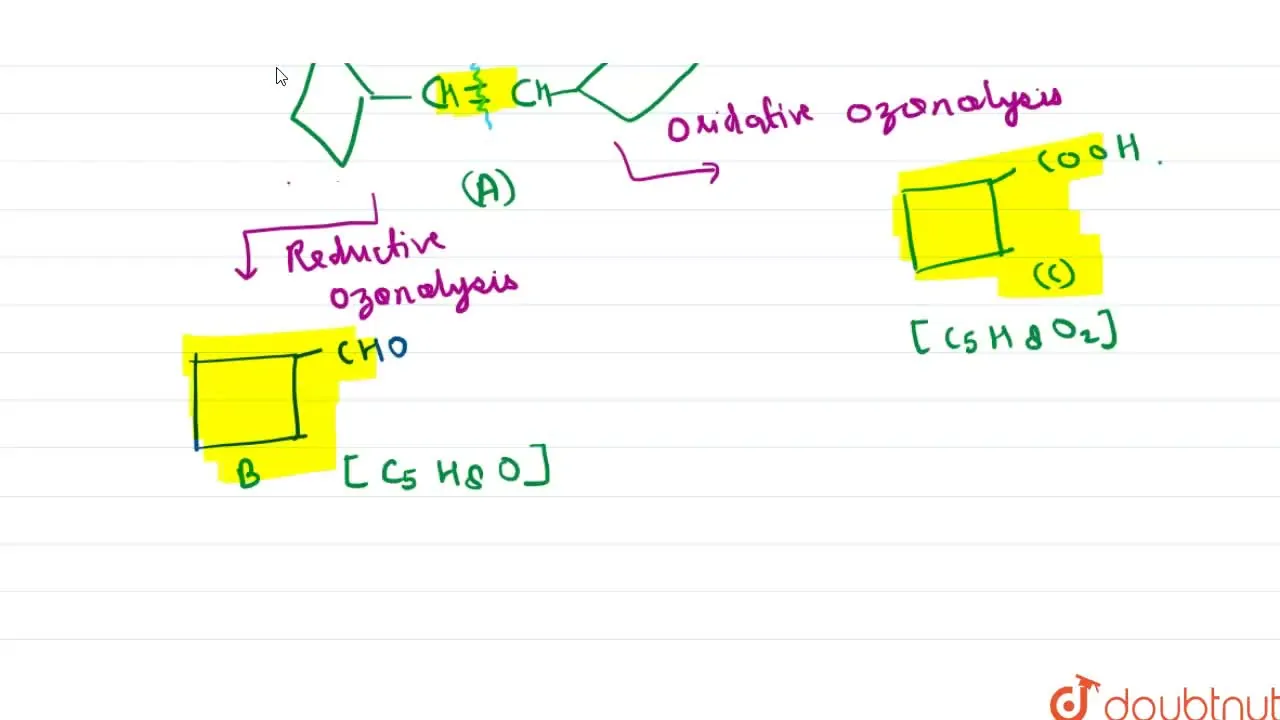(A)(C10H16)Reductiveozonolysis−−−−−−−−−−−→(B)(C5H8O)
Oxidationozonolysis−−−−−−−−−−−→(C)(C5H8O2)
(A) reacts with one equivalent of H2/Pd.
Give all the possible structures of (A),(B) , and (C) if all of them are non− resolvable.
i. D.U. in (A)=(2nC+2)−nH2=3∘( one (C=C)+two rings )
ii. D.U.in (B)=2∘[one (>C=O) group and one ring ]
iii. Since (A) reacts with one equivalent of H2, one (C=C) and two rings of five C atoms or four C atoms with one (=Me) group in each ring.
iv. Moreover, oxidative and reductive oxonolyses give the same product, so (B) must be a cyclic ketone.
Possibilities are :[ alkene of the type 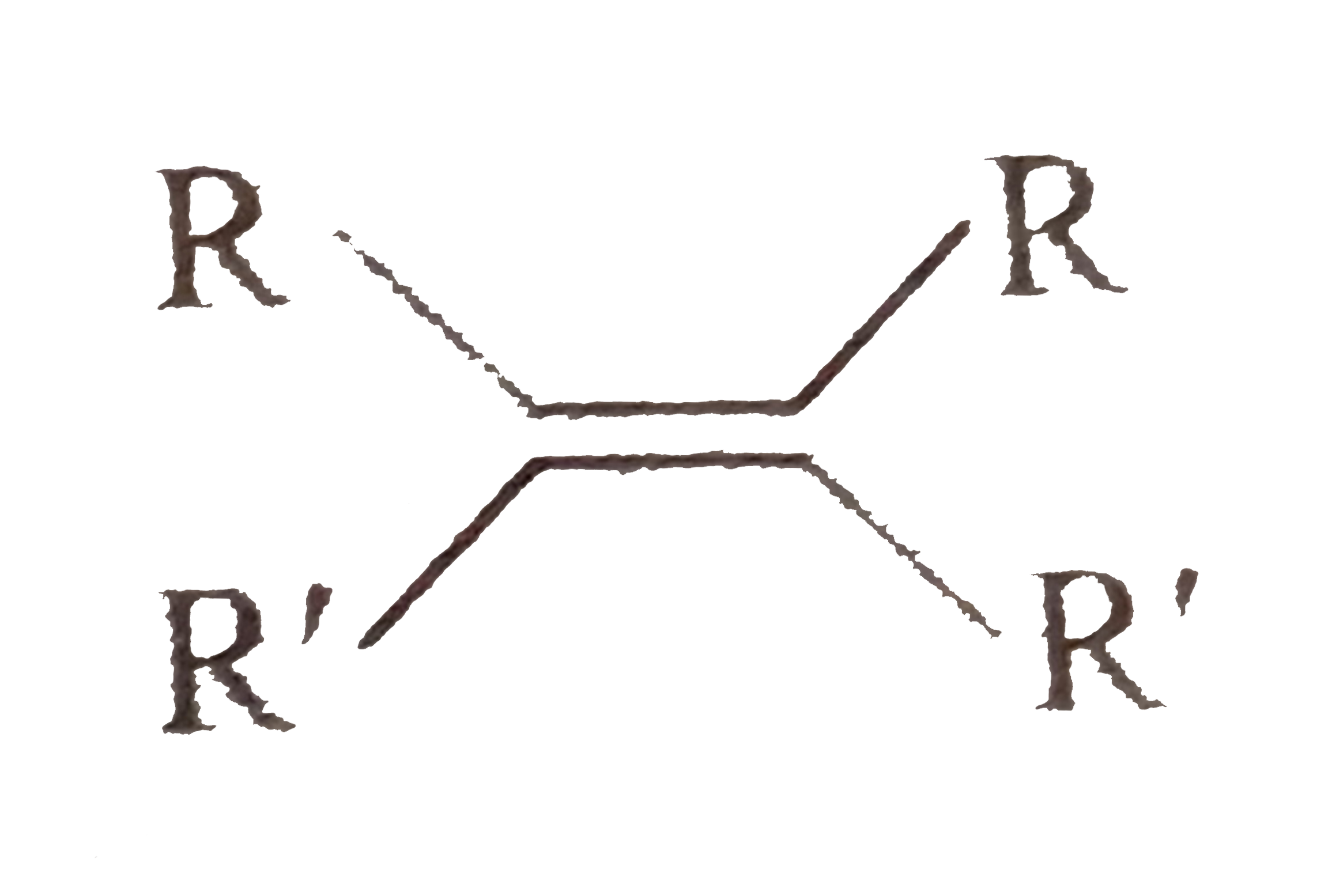 and (C=C) exocyclic to both rings. ].
and (C=C) exocyclic to both rings. ].
a. 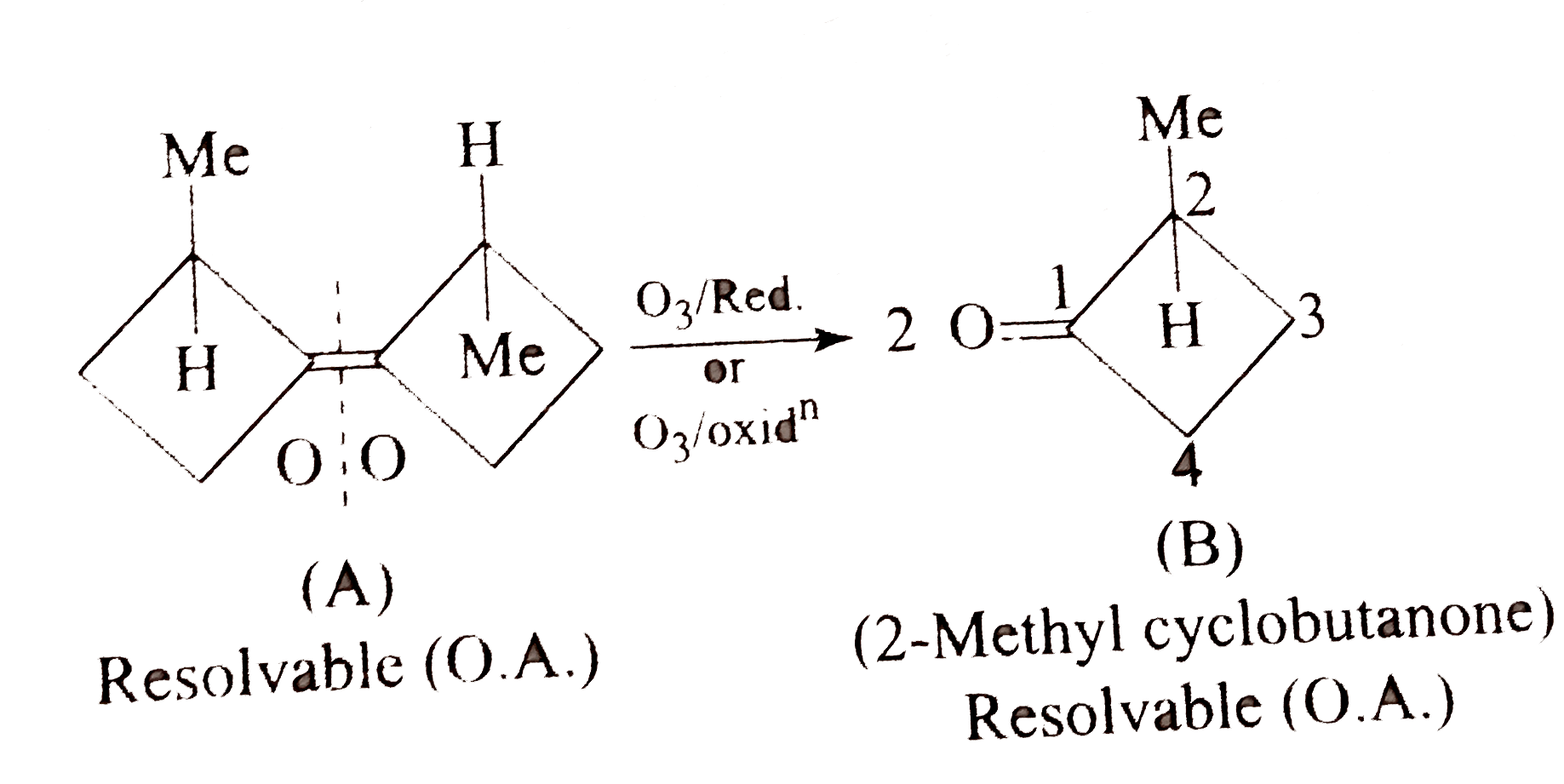
b. Both (A) and (B) are optically inactive( non− resolvable ).
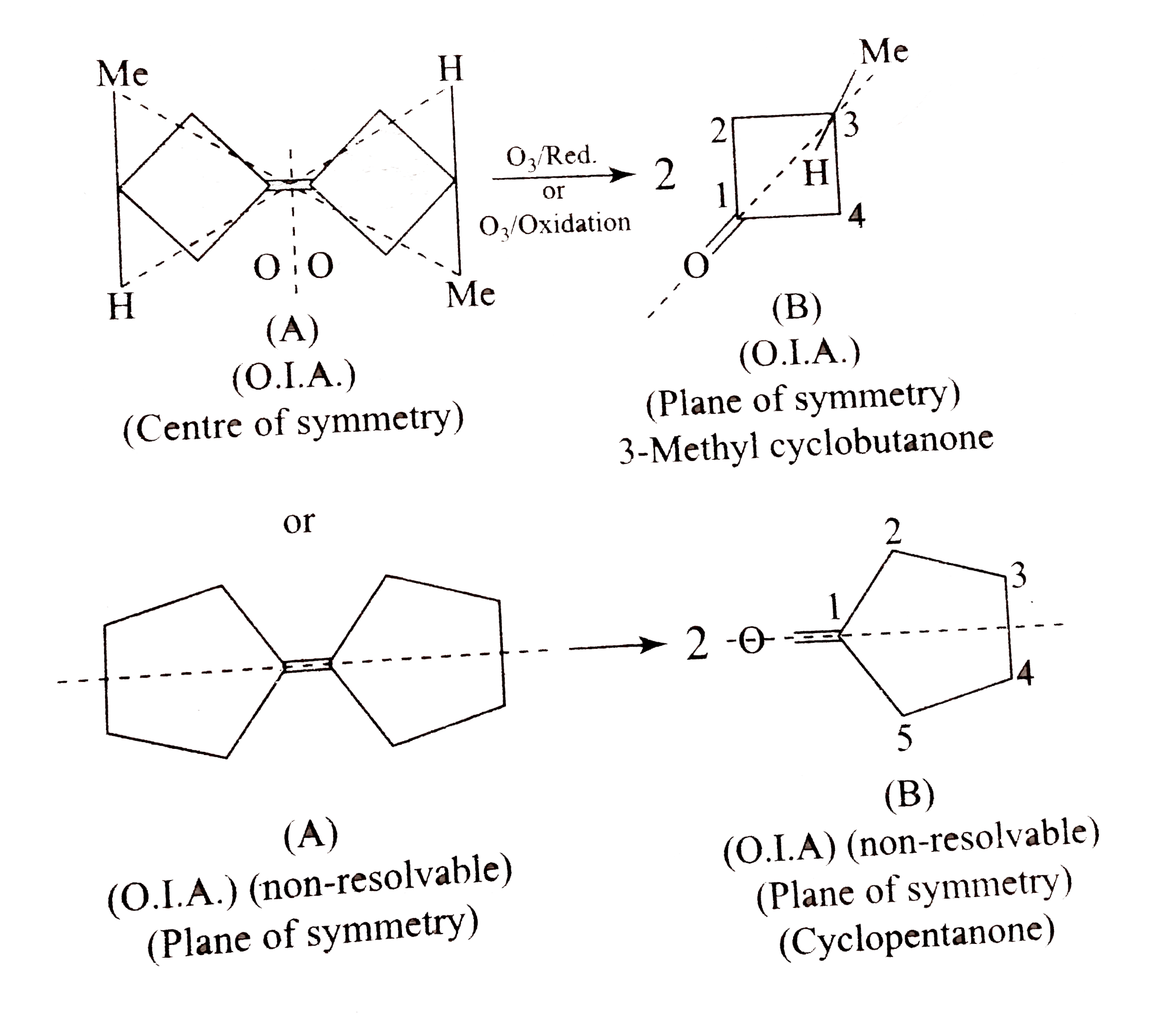
c. (A) is non− resolvable but (B) is resolvable. ltbr> 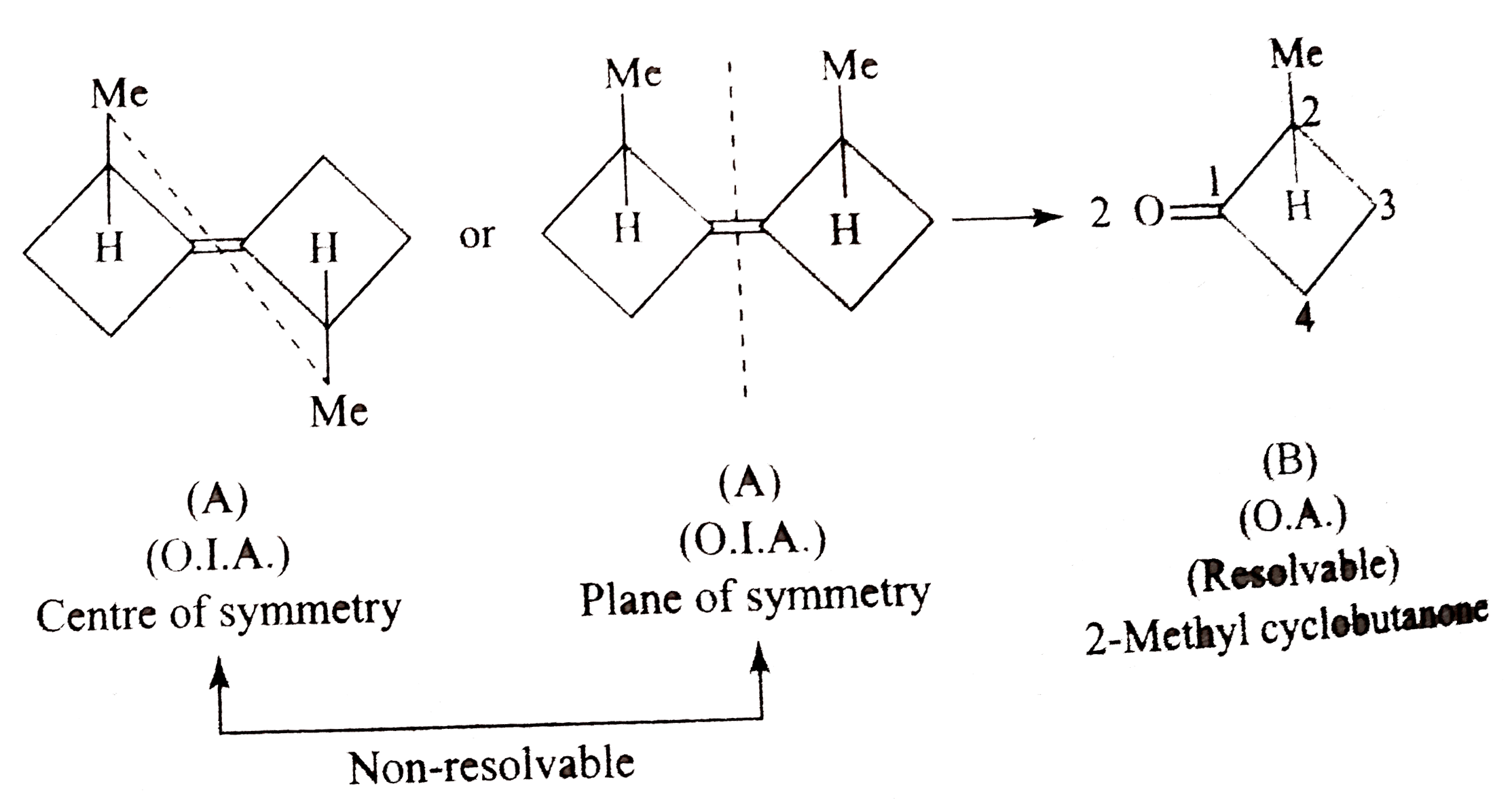
Related Playlists
- BOOK - CENGAGE CHEMISTRY ENGLISHCHAPTER - ALKENES AND ALKADIENESEXERCISE - linked Comprehension Type38videos
ALKENES AND ALKADIENES
- BOOK - CENGAGE CHEMISTRY ENGLISHCHAPTER - ALKENES AND ALKADIENESEXERCISE - Multiple Correct Answer Type41videos
ALKENES AND ALKADIENES
- BOOK - CENGAGE CHEMISTRY ENGLISHCHAPTER - ALKENES AND ALKADIENESEXERCISE - SOLVED Example62videos
ALKENES AND ALKADIENES
- BOOK - CENGAGE CHEMISTRY ENGLISHCHAPTER - ALKANES AND CYCLOALKANESEXERCISE - Archives13videos
ALKANES AND CYCLOALKANES
- BOOK - CENGAGE CHEMISTRY ENGLISHCHAPTER - ALKYNESEXERCISE - Exercises (Archives - Analytical and Desriptive Type)4videos
ALKYNES
Similar Questions
C8H10O3,H2O−−−−→C4H6O2 Acid (B), Identify (A) and (B) in the above reaction
View SolutionAn organic compound (A) (C8H14O) forms an oxime and gives a positive haloform reaction. On ozonolysis, it gives acetone and a compound (B) (C5H8O2) . (B) forms a dioxime and on subjecting to oxidation reaction gives an acid (C ) (C4H6O4). On treatment with excess of ammonia and strong heating, (C ) gives a neutral compound (D) (C4H5O2N). (D) on distillation with zinc dust forms pyrrloe. Suggest the possible structures of (A), (B), (C ), and (D). Explain the chemical reactions involved.
View Solution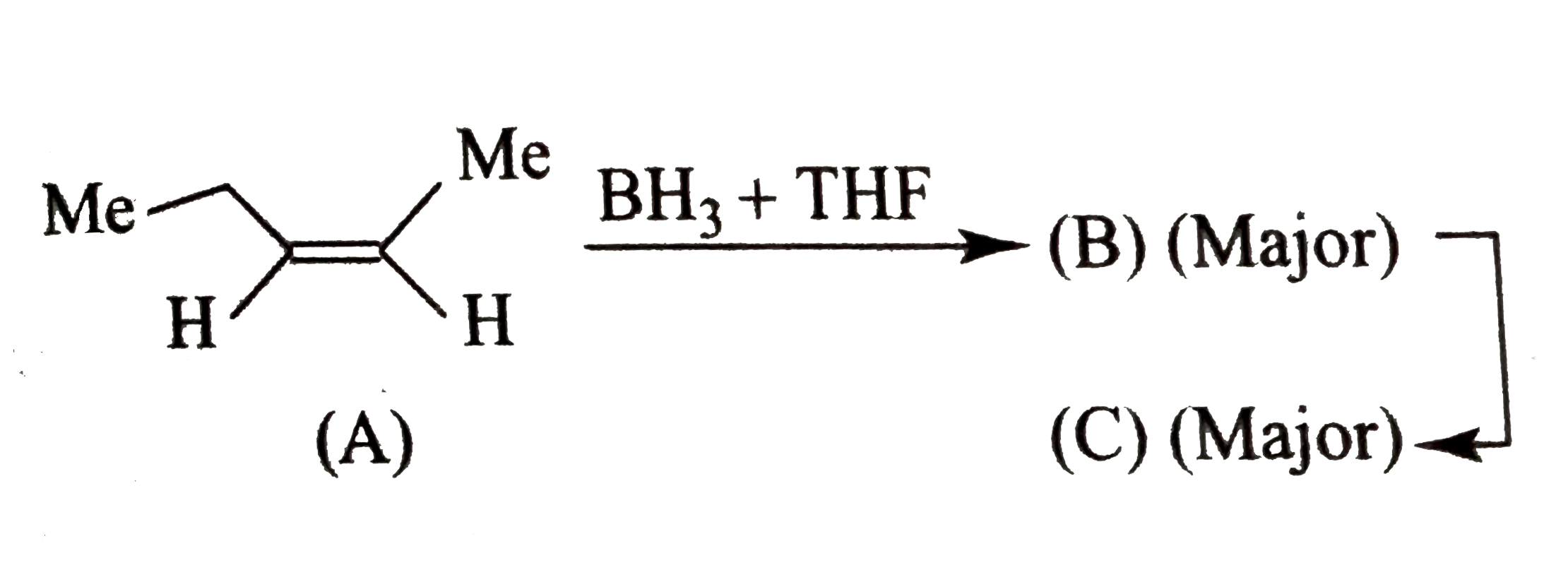 H2O2+ΘOH
H2O2+ΘOH
B and C are:View Solution(A)(C4H8O)H3O⊕−−−→(B)CrO3−−−−−→acetic acid(C)CH2N2−−−→Δ(D)
The compound 'D' isView SolutionAn unknown compound on ozonolysis to give acid C3H6O2 and a ketone C4H8O. From this information identify structure of unknown compound.
View SolutionCH3OH+C2H5OHH⊕−−→ Products
View SolutionC2H5O−O∣∣C−OC2H52MeMgBr−−−−−→(A). The product (A) formed can:
View SolutionC5H11Br+NaCN→AH3O+−−−→B+NaOHCaO−−→C
C' has the formula C5H12 which can give four structural isomeric monochloro derivative . What is the structure of C5H11Br ?View SolutionAn alkene (A)C16H16 on ozonolysis gives only one product (B)(C8H8O). Compound (B) on reaction with NH2OH followed by reaction with H2SO4,Δ gives N - methyl benzamide the compound 'A' is -
View SolutionRed precipitate Cu2Cl2←−−−−NH4OHP(C5H8)Ozonolysis−−−−−→2-Methylpropanoic acid + compound (Q) structure of P can be-
View Solution

